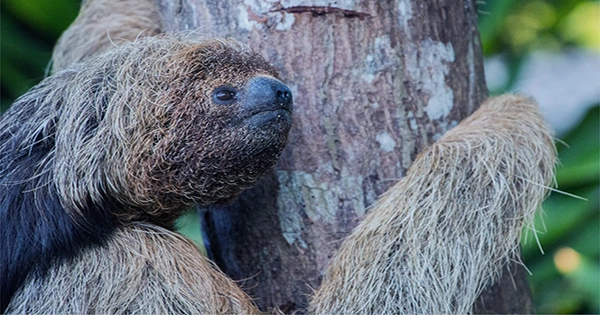Two distinct sloth species with heads that are exactly like coconuts live in the Brazilian Atlantic Forest, according to recent research. Maned sloths are found in a tiny area of this coastal forest, and although they were once assumed to be one species, it turns out that the northern and southern populations are genetically different.
The issues encountered by conservationists are actually made more difficult by the difference between different sloth species, even though two coconut heads may be preferable to one. The authors of a recent study noted the need for more protection by stating that the geographic distribution of each species becomes substantially smaller with the new taxonomic order they have recommended.
Although British scientist John Edward Gray claimed to have discovered a second species of maned sloth in 1850 and named it Bradypus crinitus, the maned sloth (Bradypus torquatus) was originally reported in 1811. Taxonomists later disproved his claims, stating that the specimen reported by Gray was in reality a B. torquatus, despite the fact that the new study establishes the existence of B. crinitus.
24 maned sloths, some from the northern states of Bahia and Sergipe, and the rest from the southern states of Rio de Janeiro and Esprito Santo were subjected to a morphological investigation by the researchers. Southern sloths had flatter skulls, rounder mouths, and larger cheekbones than their northern counterparts.
Then, “significant genetic divergence” between the southern and northern groups was discovered through genetic research of 55 maned sloths. Researchers determined that there were 86 mutational steps separating the two populations by examining a collection of mitochondrial genes that are collectively inherited. They estimated that this divergence took place roughly 4.24 million years ago.
The northern maned sloth (Bradypus torquatus), is found in the Brazilian states of Bahia and Sergipe, and the southern maned sloth (Bradypus crinitus), which is found in the states of Rio de Janeiro and Espirito Santo, can be distinguished, according to the researchers’ integrative approach.
The Rio Doce, which serves as a boundary between related species of mice and capuchin monkeys, separates the ranges of the two species. The river may act as a physical barrier, but the researchers are unable to determine whether the divergent climatic and geographic conditions on either side of this marker or the phylogeographic breakdowns that result from them are to blame.
They do point out that the B. crinitus population would have been confined to a “small climatically stable sanctuary” on the southern side of the Rio Doce, and that this restriction may have aided in the split of the two species.
“Human-caused habitat fragmentation and Atlantic Forest degradation likely made this separation worse. The scientists state that these procedures “may have limited the exchange of genes among groups.”
The researchers’ assertion that both species’ habitats are “severely fragmented” and that both are probably classifiable as “threatened” is alarming.















